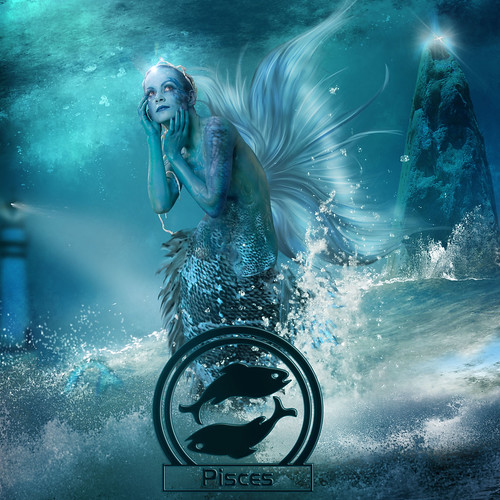Terials and MethodsAll restriction enzymes were obtained from New England Biolabs (Frankfurt/Main, Germany) or Fermentas (St. Leon-Rot, Germany). Oligonucleotide primers were synthesized by MWG (Ebersberg, Germany). All chemicals were of the highest grade commercially available.CloningAll plasmids of E. coli F1-ATP synthase were derived from pKH7 [17?9] (all wild type cysteines were replaced by alanines, aHistidine6-tag was added to the N-terminal end of 370-86-5 web subunit b, and one cysteine, cK109C, was introduced for binding an actin filament in the rotation assay). Site-directed mutagenesis was carried out using PCR. The plasmid pMM6 (aP280C, cK109C) [17] was used as a template for the generation of pFH5 (aP280C, cK109C, cG282C) using the (-)-Indolactam V primer 59-CCGAGATCGTCTCGTGTGCCGCCGCGG-39 and its complement. The primer 59-CGAACCCGATCCGAAGTGTCTGCTGGA TACCCTGC-39 and its complement  were used to introduce an additional cysteine in subunit c (cA213C) to improve the binding of the actin filament, resulting in the plasmid pGH54 (aP280C, cK109C, cA213C, cG282C). The plasmid pGH50 (aP281C, cK109C) was generated analogous to pMM6 using the primer 59CTGCTCCGTCGTCCGTGTGGACGTGAAGCATTC-39 andTable 1. Mutants and effects of cross-link formation.EF1-mutantCross-link regionCross-link positionATPase activity/U/mg reduced oxidized 140 78 36 9 ,1 10 (100 ) (76 ) (38 ) (26 ) (,2 ) (7 )Cross-link yieldKH7 MM10 GH54 FH4 GH19 PP2 SWtop top top top middle bottomc285/a280 c282/a280 c279/a281 c276/a284 c262/a334 c87/b140 140 102 96 34 700 . 98 , 90 , 85 . 95 . 98 , 90The table shows for the six EF1-mutants MM10, GH54, FH4, GH19, PP2, and SW3 the cross-link region and position, the ATP hydrolysis activity after reduction and oxidization, and the cross-link yield. By re-reducing the oxidized samples the activity could be restored (GH54: 93 23977191 , FH4: 45 , GH19: 100 ). The wild type KH7 denotes the enzyme without cysteines for cross-linking the rotor to the stator. The data for KH7, MM10, PP2, and SW3 were taken from [17]. doi:10.1371/journal.pone.0053754.tUnfolding of Subunit Gamma in Rotary F-ATPaseits complement. The plasmid pGH50 was used as template to generate pFH4 using the primer 59-CAGGAACTCACCGAGTGTGTCTCGGGGGCCGCCG-39 and its complement to introduce cI279C. The template plasmids were cut using KpnI/ SacI. The resulting fragment was 23727046 introduced into the plasmid pBluescript II SK (Agilent Technologies, Santa Clara, USA) for mutagenesis-PCR. After verification of the introduced mutation via sequencing, the resulting plasmid was cut using KpnI/SacI, whereas the desired fragment was ligated into the corresponding template plasmid. Mutations were again verified by sequencing. The resulting plasmid was named pFH4 (aP281C, cK109C, cI279C). The plasmid pKG11 (aE284C, cK109C, cL276C) was kindly provided by K. Gumbiowski (University of Osnabruck, ?Germany). An additional mutation (cA213C) was introduced
were used to introduce an additional cysteine in subunit c (cA213C) to improve the binding of the actin filament, resulting in the plasmid pGH54 (aP280C, cK109C, cA213C, cG282C). The plasmid pGH50 (aP281C, cK109C) was generated analogous to pMM6 using the primer 59CTGCTCCGTCGTCCGTGTGGACGTGAAGCATTC-39 andTable 1. Mutants and effects of cross-link formation.EF1-mutantCross-link regionCross-link positionATPase activity/U/mg reduced oxidized 140 78 36 9 ,1 10 (100 ) (76 ) (38 ) (26 ) (,2 ) (7 )Cross-link yieldKH7 MM10 GH54 FH4 GH19 PP2 SWtop top top top middle bottomc285/a280 c282/a280 c279/a281 c276/a284 c262/a334 c87/b140 140 102 96 34 700 . 98 , 90 , 85 . 95 . 98 , 90The table shows for the six EF1-mutants MM10, GH54, FH4, GH19, PP2, and SW3 the cross-link region and position, the ATP hydrolysis activity after reduction and oxidization, and the cross-link yield. By re-reducing the oxidized samples the activity could be restored (GH54: 93 23977191 , FH4: 45 , GH19: 100 ). The wild type KH7 denotes the enzyme without cysteines for cross-linking the rotor to the stator. The data for KH7, MM10, PP2, and SW3 were taken from [17]. doi:10.1371/journal.pone.0053754.tUnfolding of Subunit Gamma in Rotary F-ATPaseits complement. The plasmid pGH50 was used as template to generate pFH4 using the primer 59-CAGGAACTCACCGAGTGTGTCTCGGGGGCCGCCG-39 and its complement to introduce cI279C. The template plasmids were cut using KpnI/ SacI. The resulting fragment was 23727046 introduced into the plasmid pBluescript II SK (Agilent Technologies, Santa Clara, USA) for mutagenesis-PCR. After verification of the introduced mutation via sequencing, the resulting plasmid was cut using KpnI/SacI, whereas the desired fragment was ligated into the corresponding template plasmid. Mutations were again verified by sequencing. The resulting plasmid was named pFH4 (aP281C, cK109C, cI279C). The plasmid pKG11 (aE284C, cK109C, cL276C) was kindly provided by K. Gumbiowski (University of Osnabruck, ?Germany). An additional mutation (cA213C) was introduced  in pKG11 as described above, resulting in the plasmid pGH19.of gamma cross-links were determined from the changes of intensity of the c-bands in the oxidized state in comparison to the reduced state.ImmunoblotFor immunoblotting proteins were transferred to a PVDFmembrane after SDS-PAGE, applying 500 mA for 1 h in a blotting tank (Carl Roth, Karlsruhe, Germany). Polyclonal primary mouse and rabbit antibodies against EF1-a and EF1-c were used at dilutions of 1:200,000 and 1:400,000, respectively. Peroxidase-conjugated secondary monoclonal antibodies against primary antibodies (diluted.Terials and MethodsAll restriction enzymes were obtained from New England Biolabs (Frankfurt/Main, Germany) or Fermentas (St. Leon-Rot, Germany). Oligonucleotide primers were synthesized by MWG (Ebersberg, Germany). All chemicals were of the highest grade commercially available.CloningAll plasmids of E. coli F1-ATP synthase were derived from pKH7 [17?9] (all wild type cysteines were replaced by alanines, aHistidine6-tag was added to the N-terminal end of subunit b, and one cysteine, cK109C, was introduced for binding an actin filament in the rotation assay). Site-directed mutagenesis was carried out using PCR. The plasmid pMM6 (aP280C, cK109C) [17] was used as a template for the generation of pFH5 (aP280C, cK109C, cG282C) using the primer 59-CCGAGATCGTCTCGTGTGCCGCCGCGG-39 and its complement. The primer 59-CGAACCCGATCCGAAGTGTCTGCTGGA TACCCTGC-39 and its complement were used to introduce an additional cysteine in subunit c (cA213C) to improve the binding of the actin filament, resulting in the plasmid pGH54 (aP280C, cK109C, cA213C, cG282C). The plasmid pGH50 (aP281C, cK109C) was generated analogous to pMM6 using the primer 59CTGCTCCGTCGTCCGTGTGGACGTGAAGCATTC-39 andTable 1. Mutants and effects of cross-link formation.EF1-mutantCross-link regionCross-link positionATPase activity/U/mg reduced oxidized 140 78 36 9 ,1 10 (100 ) (76 ) (38 ) (26 ) (,2 ) (7 )Cross-link yieldKH7 MM10 GH54 FH4 GH19 PP2 SWtop top top top middle bottomc285/a280 c282/a280 c279/a281 c276/a284 c262/a334 c87/b140 140 102 96 34 700 . 98 , 90 , 85 . 95 . 98 , 90The table shows for the six EF1-mutants MM10, GH54, FH4, GH19, PP2, and SW3 the cross-link region and position, the ATP hydrolysis activity after reduction and oxidization, and the cross-link yield. By re-reducing the oxidized samples the activity could be restored (GH54: 93 23977191 , FH4: 45 , GH19: 100 ). The wild type KH7 denotes the enzyme without cysteines for cross-linking the rotor to the stator. The data for KH7, MM10, PP2, and SW3 were taken from [17]. doi:10.1371/journal.pone.0053754.tUnfolding of Subunit Gamma in Rotary F-ATPaseits complement. The plasmid pGH50 was used as template to generate pFH4 using the primer 59-CAGGAACTCACCGAGTGTGTCTCGGGGGCCGCCG-39 and its complement to introduce cI279C. The template plasmids were cut using KpnI/ SacI. The resulting fragment was 23727046 introduced into the plasmid pBluescript II SK (Agilent Technologies, Santa Clara, USA) for mutagenesis-PCR. After verification of the introduced mutation via sequencing, the resulting plasmid was cut using KpnI/SacI, whereas the desired fragment was ligated into the corresponding template plasmid. Mutations were again verified by sequencing. The resulting plasmid was named pFH4 (aP281C, cK109C, cI279C). The plasmid pKG11 (aE284C, cK109C, cL276C) was kindly provided by K. Gumbiowski (University of Osnabruck, ?Germany). An additional mutation (cA213C) was introduced in pKG11 as described above, resulting in the plasmid pGH19.of gamma cross-links were determined from the changes of intensity of the c-bands in the oxidized state in comparison to the reduced state.ImmunoblotFor immunoblotting proteins were transferred to a PVDFmembrane after SDS-PAGE, applying 500 mA for 1 h in a blotting tank (Carl Roth, Karlsruhe, Germany). Polyclonal primary mouse and rabbit antibodies against EF1-a and EF1-c were used at dilutions of 1:200,000 and 1:400,000, respectively. Peroxidase-conjugated secondary monoclonal antibodies against primary antibodies (diluted.
in pKG11 as described above, resulting in the plasmid pGH19.of gamma cross-links were determined from the changes of intensity of the c-bands in the oxidized state in comparison to the reduced state.ImmunoblotFor immunoblotting proteins were transferred to a PVDFmembrane after SDS-PAGE, applying 500 mA for 1 h in a blotting tank (Carl Roth, Karlsruhe, Germany). Polyclonal primary mouse and rabbit antibodies against EF1-a and EF1-c were used at dilutions of 1:200,000 and 1:400,000, respectively. Peroxidase-conjugated secondary monoclonal antibodies against primary antibodies (diluted.Terials and MethodsAll restriction enzymes were obtained from New England Biolabs (Frankfurt/Main, Germany) or Fermentas (St. Leon-Rot, Germany). Oligonucleotide primers were synthesized by MWG (Ebersberg, Germany). All chemicals were of the highest grade commercially available.CloningAll plasmids of E. coli F1-ATP synthase were derived from pKH7 [17?9] (all wild type cysteines were replaced by alanines, aHistidine6-tag was added to the N-terminal end of subunit b, and one cysteine, cK109C, was introduced for binding an actin filament in the rotation assay). Site-directed mutagenesis was carried out using PCR. The plasmid pMM6 (aP280C, cK109C) [17] was used as a template for the generation of pFH5 (aP280C, cK109C, cG282C) using the primer 59-CCGAGATCGTCTCGTGTGCCGCCGCGG-39 and its complement. The primer 59-CGAACCCGATCCGAAGTGTCTGCTGGA TACCCTGC-39 and its complement were used to introduce an additional cysteine in subunit c (cA213C) to improve the binding of the actin filament, resulting in the plasmid pGH54 (aP280C, cK109C, cA213C, cG282C). The plasmid pGH50 (aP281C, cK109C) was generated analogous to pMM6 using the primer 59CTGCTCCGTCGTCCGTGTGGACGTGAAGCATTC-39 andTable 1. Mutants and effects of cross-link formation.EF1-mutantCross-link regionCross-link positionATPase activity/U/mg reduced oxidized 140 78 36 9 ,1 10 (100 ) (76 ) (38 ) (26 ) (,2 ) (7 )Cross-link yieldKH7 MM10 GH54 FH4 GH19 PP2 SWtop top top top middle bottomc285/a280 c282/a280 c279/a281 c276/a284 c262/a334 c87/b140 140 102 96 34 700 . 98 , 90 , 85 . 95 . 98 , 90The table shows for the six EF1-mutants MM10, GH54, FH4, GH19, PP2, and SW3 the cross-link region and position, the ATP hydrolysis activity after reduction and oxidization, and the cross-link yield. By re-reducing the oxidized samples the activity could be restored (GH54: 93 23977191 , FH4: 45 , GH19: 100 ). The wild type KH7 denotes the enzyme without cysteines for cross-linking the rotor to the stator. The data for KH7, MM10, PP2, and SW3 were taken from [17]. doi:10.1371/journal.pone.0053754.tUnfolding of Subunit Gamma in Rotary F-ATPaseits complement. The plasmid pGH50 was used as template to generate pFH4 using the primer 59-CAGGAACTCACCGAGTGTGTCTCGGGGGCCGCCG-39 and its complement to introduce cI279C. The template plasmids were cut using KpnI/ SacI. The resulting fragment was 23727046 introduced into the plasmid pBluescript II SK (Agilent Technologies, Santa Clara, USA) for mutagenesis-PCR. After verification of the introduced mutation via sequencing, the resulting plasmid was cut using KpnI/SacI, whereas the desired fragment was ligated into the corresponding template plasmid. Mutations were again verified by sequencing. The resulting plasmid was named pFH4 (aP281C, cK109C, cI279C). The plasmid pKG11 (aE284C, cK109C, cL276C) was kindly provided by K. Gumbiowski (University of Osnabruck, ?Germany). An additional mutation (cA213C) was introduced in pKG11 as described above, resulting in the plasmid pGH19.of gamma cross-links were determined from the changes of intensity of the c-bands in the oxidized state in comparison to the reduced state.ImmunoblotFor immunoblotting proteins were transferred to a PVDFmembrane after SDS-PAGE, applying 500 mA for 1 h in a blotting tank (Carl Roth, Karlsruhe, Germany). Polyclonal primary mouse and rabbit antibodies against EF1-a and EF1-c were used at dilutions of 1:200,000 and 1:400,000, respectively. Peroxidase-conjugated secondary monoclonal antibodies against primary antibodies (diluted.
